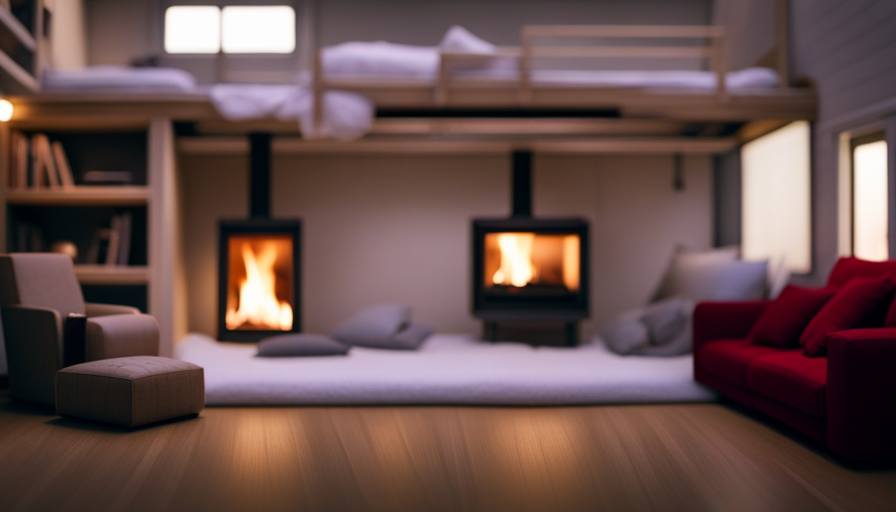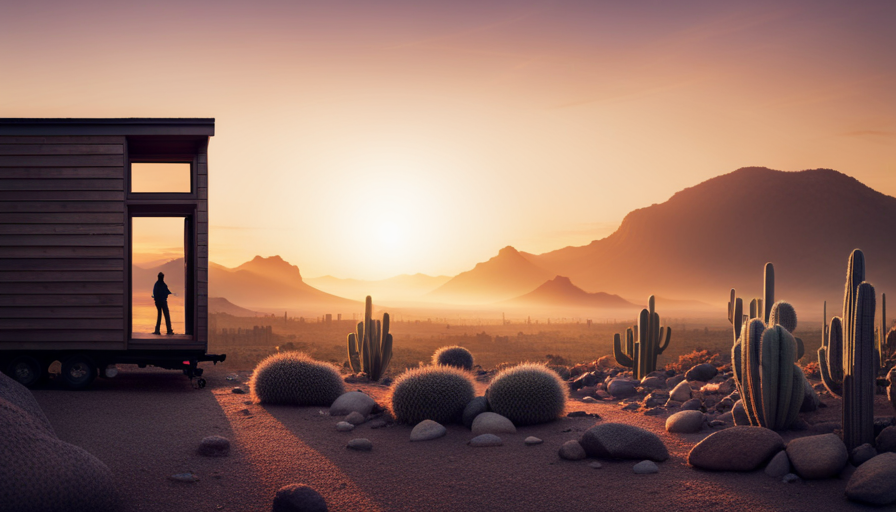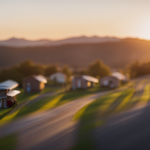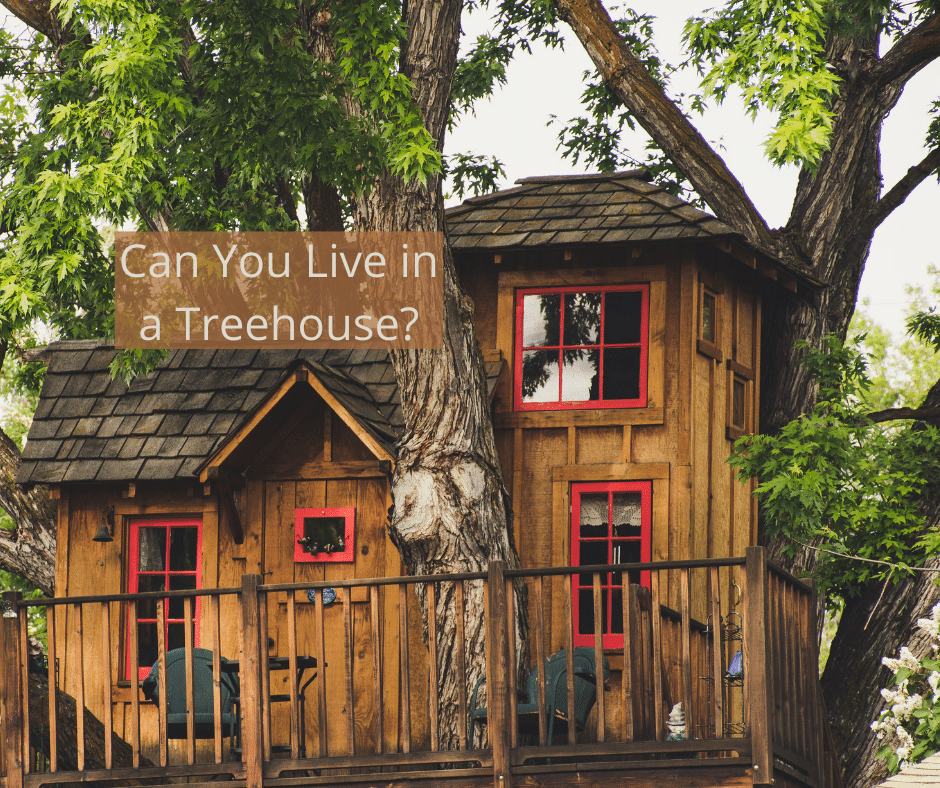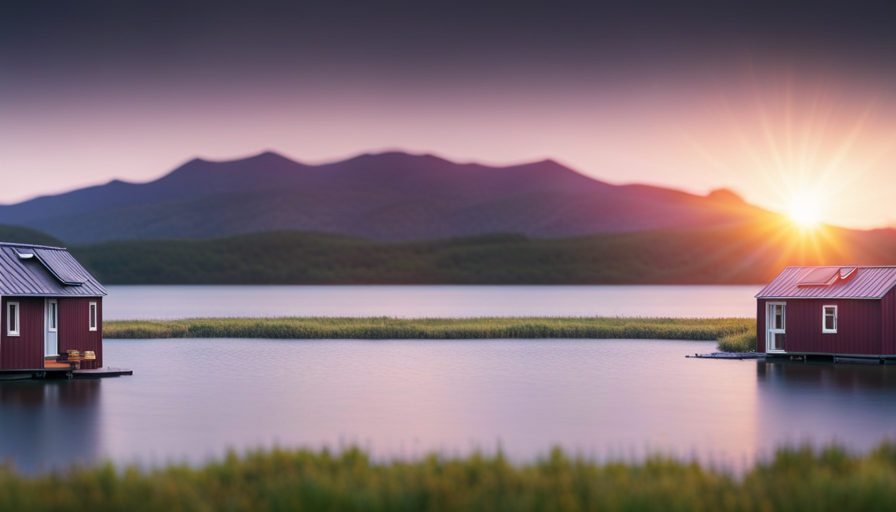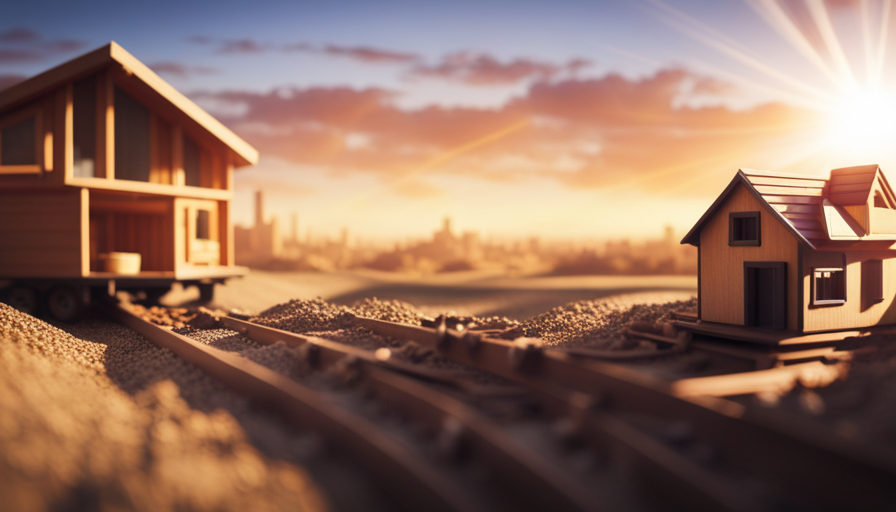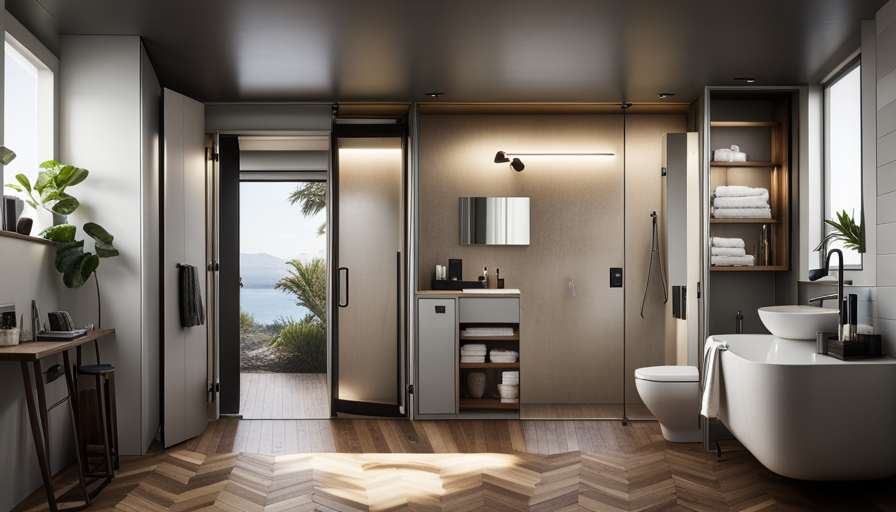Ah, the appeal of residing in a small house. The idea of downsizing living quarters, embracing a simpler lifestyle, and adopting a minimalist mindset has captured the interest of many individuals. But the real question remains: how sustainable is it to live in a tiny house long-term? While this may seem like a straightforward question, the answer is far from simple.
As someone who has embarked on this journey myself, I can attest to the challenges and rewards that come with living in a small space. In this article, we will explore the benefits of tiny house living, the challenges one may face, and the strategies for maximizing storage and organization.
We will delve into the efficient use of resources such as water and energy, and the importance of creating a functional and comfortable living space. Financial considerations and cost savings will also be discussed, as well as the impact of tiny house living on mental and emotional well-being.
Lastly, we will explore the community and social aspects of this lifestyle, and delve into the long-term viability and future planning of living in a tiny house.
So, let’s dive in and discover just how long one can thrive in a tiny house.
Key Takeaways
- Tiny house living offers the allure of downsizing, simplifying, and embracing a minimalist lifestyle.
- Maximizing storage and organization is crucial in a small space, and can be achieved through multi-functional furniture and vertical storage solutions.
- Efficient use of resources like water and energy is important in tiny house living, and can be achieved through strategies such as low-flow fixtures, rainwater collection, and renewable energy sources like solar panels.
- Tiny house living promotes sustainability and eco-friendly practices, through the use of sustainable materials, energy-efficient appliances, and eco-friendly practices.
Benefits of Tiny House Living
You’ll quickly realize the endless advantages of living in a tiny house, where simplicity and freedom intertwine to create a truly fulfilling lifestyle.
One of the main benefits is the positive environmental impact. With a smaller living space, you’ll use less energy for heating, cooling, and lighting, reducing your carbon footprint. Tiny houses also promote a minimalist lifestyle, encouraging you to declutter and live with only the essentials. This not only saves you money but also allows you to focus on experiences rather than material possessions. Additionally, the smaller size of a tiny house means fewer resources are needed for construction, further reducing your environmental impact.
Living in a tiny house also offers financial benefits. The reduced cost of building and maintaining a tiny house means you can save money on mortgage or rent payments. This financial freedom allows you to pursue your passions, travel, or work less, providing a sense of liberation and flexibility.
However, living in a small space does come with its challenges. It requires careful organization and creativity to maximize the use of every inch. Storage can be limited, and you may need to prioritize which belongings are essential.
Despite these challenges, the benefits of living in a tiny house far outweigh the drawbacks, leading to a more sustainable, fulfilling, and intentional way of life.
Challenges of Living in a Small Space
Living in a cramped space can be like living in a sardine can, with limited room to move and store your belongings. However, despite the challenges of living in a small space, there are ways to adapt and make the most of it.
Here are three key challenges of living in a small space and how to overcome them:
-
Lack of storage: In a tiny house, finding enough storage can be a constant struggle. To combat this issue, investing in multi-functional furniture, such as beds with built-in drawers or ottomans that double as storage, can help maximize space. Utilizing vertical storage solutions, like wall-mounted shelves or hanging organizers, is also essential in small spaces.
-
Limited privacy: Living in close quarters can make it difficult to have personal space and privacy. To address this challenge, creating designated areas for specific activities can help delineate boundaries and create a sense of privacy. Utilizing room dividers or curtains can also provide a temporary separation when needed.
-
Adapting to minimalism: Living in a small space often requires downsizing and adopting a minimalist lifestyle. This means letting go of unnecessary belongings and learning to live with less. Embracing minimalism can be liberating and help create a more organized and clutter-free living environment.
By overcoming these challenges and embracing a minimalist mindset, it’s possible to thrive in a small space. Maximizing storage and organization is key to making the most of your tiny house.
Maximizing Storage and Organization
To truly thrive in a small space, one must master the art of maximizing storage and organization. When living in a tiny house, every square inch counts, and finding clever storage solutions is essential.
One of the keys to maximizing space is to utilize vertical storage. By installing shelves and hooks on the walls, you can store items off the floor and make use of the vertical space.
Additionally, investing in furniture that doubles as storage can be a game-changer. For example, a bed with built-in drawers or a coffee table with hidden compartments can provide valuable storage options.
Another tip is to make use of underutilized spaces, such as the area under the stairs or above the kitchen cabinets. These spaces can be transformed into additional storage areas by installing shelves or adding baskets.
By thinking creatively and utilizing every nook and cranny, you can make the most of your tiny space.
Transitioning into the next section about efficient use of resources, it’s important to consider not only maximizing storage but also finding ways to efficiently utilize resources such as water and energy.
Efficient Use of Resources (Water, Energy, etc.)
Efficiently using resources such as water and energy is crucial in order to minimize waste and make the most of available supplies. In a tiny house, where space is limited, it becomes even more important to find innovative ways to conserve and utilize these resources effectively.
When it comes to water conservation, there are several strategies that can be employed. Installing low-flow fixtures, such as faucets and showerheads, can significantly reduce water usage without sacrificing comfort. Additionally, collecting and reusing rainwater can provide a sustainable source of water for activities like irrigation and toilet flushing.
In terms of energy, tiny house dwellers can take advantage of renewable energy sources to power their homes. Solar panels, for example, can be installed on the roof to generate electricity, reducing reliance on the grid. Energy-efficient appliances and LED lighting can also contribute to minimizing energy consumption.
By implementing these efficient water conservation and renewable energy practices, tiny house residents can significantly reduce their environmental impact. Not only does this lead to cost savings, but it also promotes a more sustainable way of living.
Transitioning now to the next section about creating a functional and comfortable living space, it’s important to consider design strategies that optimize the available square footage.
Creating a Functional and Comfortable Living Space
Maximizing the limited space in a tiny house involves clever design strategies that create a cozy and functional living environment. Creating a cozy atmosphere is essential in a tiny house, as it helps to make the small space feel warm and inviting.
One way to achieve this is by utilizing multi-functional furniture. For example, a sofa that can be converted into a bed or a coffee table with built-in storage compartments can maximize the use of space while still providing comfort and functionality.
In order to evoke an emotional response in the audience, imagine coming home after a long day and sinking into a comfortable chair that also doubles as a storage unit for books and blankets. The feeling of relaxation and contentment that comes from being surrounded by items that bring joy and serve a practical purpose is truly priceless.
Additionally, incorporating elements of nature, such as plants or natural materials, can help create a soothing and calming atmosphere. Imagine sitting by a window, surrounded by lush greenery, as the soft sunlight streams in, creating a peaceful ambiance.
Transitioning into the subsequent section about sustainability and eco-friendly practices, it is important to consider not only the functionality and comfort of a tiny house but also its impact on the environment. By using sustainable materials, incorporating energy-efficient appliances, and implementing eco-friendly practices, we can ensure that our tiny house is not only a cozy and functional living space but also a responsible and sustainable choice for the future.
Sustainability and Eco-Friendly Practices
When it comes to living in a tiny house, creating a functional and comfortable living space is crucial. However, it’s equally important to consider sustainability and eco-friendly practices.
By incorporating green building techniques and utilizing renewable energy sources, tiny house dwellers can have a positive impact on the environment. Green building involves using materials and methods that are environmentally friendly, such as reclaimed wood, recycled insulation, and low VOC paints. These choices not only reduce the carbon footprint but also contribute to a healthier indoor environment.
Additionally, renewable energy sources like solar panels can provide power for lighting, heating, and appliances, further reducing reliance on fossil fuels.
Living sustainably in a tiny house aligns perfectly with the values of minimalism and intentional living. It allows individuals to live in harmony with nature while minimizing their impact on the planet. By adopting eco-friendly practices, tiny house dwellers can create a more sustainable future for themselves and future generations.
As we transition into the next section about financial considerations and cost savings, it’s important to note that sustainable living not only benefits the environment but also the wallet.
Financial Considerations and Cost Savings
Save money and watch your finances flourish by considering the financial benefits and cost savings of living in a tiny house, where your wallet can thrive like a flourishing garden. Living in a tiny house allows for efficient financial planning and budgeting strategies, ensuring that you make the most of your income and resources.
Here are some key ways in which living in a tiny house can help you save money:
-
Reduced utility bills: With a smaller space to heat, cool, and light up, your utility bills can significantly decrease, leaving more money in your pocket.
-
Minimal maintenance costs: Tiny houses require less maintenance compared to traditional homes, resulting in lower repair and upkeep expenses.
-
Lower property taxes: As tiny houses have smaller footprints, property taxes are often significantly lower, allowing you to keep more money in your bank account.
-
Reduced consumption: Living in a tiny house encourages a minimalist lifestyle, helping you save money by reducing unnecessary purchases and focusing on what truly matters.
By taking advantage of these financial benefits and implementing smart budgeting strategies, you can enjoy a more financially stable and secure lifestyle in a tiny house. Transitioning into the next section about mental and emotional well-being in a tiny house, it’s important to understand how these financial considerations contribute to a holistic and fulfilling living experience.
Mental and Emotional Well-being in a Tiny House
Enhance your overall well-being and cultivate a sense of tranquility by immersing yourself in the mental and emotional benefits of living in a cozy, intimate space like a tiny house. Coping strategies play a vital role in navigating the challenges that may arise from living in a smaller environment. One effective strategy is to create designated spaces for different activities, such as a reading nook or a meditation corner. These spaces can provide a sense of escape and relaxation, helping to alleviate stress and promote mental well-being.
Furthermore, the minimalist lifestyle promoted by tiny house living encourages individuals to focus on what truly matters, reducing the clutter that often overwhelms our minds. This intentional simplicity can lead to increased mindfulness and a greater sense of contentment. Additionally, the close proximity to nature that many tiny houses offer can have a positive impact on mental health. Being surrounded by natural beauty can promote feelings of peace and serenity.
In terms of relationships, living in a tiny house can foster stronger connections with loved ones. The smaller space encourages more frequent and meaningful interactions, leading to a deeper understanding and appreciation of one another. However, it is important to establish boundaries and communicate effectively to ensure that everyone’s needs are met.
As we explore the mental and emotional well-being of tiny house living, it is important to recognize the impact of community and social aspects. By fostering connections with like-minded individuals in tiny house communities, individuals can find support, share experiences, and form lasting friendships. This sense of belonging can further enhance overall well-being and create a fulfilling lifestyle.
Community and Social Aspects of Tiny House Living
Immerse yourself in the vibrant community of tiny house living, where neighbors are as close as family and friendships blossom like wildflowers in a meadow. Living in a tiny house offers a unique opportunity for community engagement and social support.
In such close proximity, you can easily connect with your neighbors, sharing meals, laughter, and even daily activities. The tight-knit community that forms within a tiny house village is something truly special.
One of the highlights of tiny house living is the sense of belonging and camaraderie. Whether it’s a potluck dinner, a game night, or a neighborhood project, there is always something going on that encourages interaction and fosters relationships. The shared experience of living in a small space creates a supportive environment where everyone looks out for one another. It’s not uncommon for neighbors to lend a helping hand, whether it’s fixing a leaky faucet or simply offering a listening ear.
The social aspects of tiny house living go beyond just the immediate community. There are often events and gatherings organized specifically for tiny house enthusiasts, where you can meet like-minded individuals and share stories and tips. These events create a sense of belonging to a larger movement, where people come together to celebrate the simplicity and sustainability of tiny house living.
As we delve into the next section about long-term viability and future planning, it’s important to consider how the strong sense of community and social support in tiny house living can contribute to a sustainable and fulfilling lifestyle.
Long-Term Viability and Future Planning
Nurturing a strong sense of community and actively planning for the future ensures the lasting viability of tiny house living. As more people embrace this alternative lifestyle, it becomes crucial to consider the future growth and long-term maintenance of tiny house communities.
One key aspect of future planning is the establishment of sustainable infrastructure. This involves implementing renewable energy sources, such as solar panels and rainwater collection systems, to reduce the ecological footprint of tiny house communities. Additionally, designing communal spaces that encourage social interaction and provide essential amenities like gardens and shared recreational areas fosters a sense of belonging and community spirit.
To further ensure the long-term viability of tiny house living, it is important to consider the maintenance needs of these compact dwellings. Regular inspections and repairs are essential to prevent any structural issues and maintain the overall integrity of the homes. Developing maintenance guidelines and offering workshops on basic repairs can empower tiny house residents to take care of their homes effectively.
To engage the audience and provide a visual representation, the following table outlines some key considerations for future growth and long-term maintenance in tiny house communities:
| Future Growth | Long-Term Maintenance |
|---|---|
| Sustainable | Regular inspections |
| infrastructure | and repairs |
| Community spaces | Maintenance guidelines |
| and workshops |
By embracing these strategies and considering the future growth and maintenance needs, tiny house living can thrive and continue to offer a sustainable and fulfilling lifestyle for years to come.
Frequently Asked Questions
What are the legal requirements for living in a tiny house?
Living in a tiny house requires adhering to certain legal requirements, such as obtaining tiny house permits and complying with tiny house regulations. These regulations vary depending on your location, so it’s crucial to research and understand the specific rules in your area. Failure to comply can result in fines or even eviction.
To ensure a smooth and legal living experience, it’s essential to familiarize yourself with the guidelines and obtain the necessary permits before moving into a tiny house.
How do you deal with zoning and building codes when it comes to tiny houses?
When it comes to tiny houses, dealing with zoning restrictions and building codes can be a challenge.
Zoning restrictions dictate where you can park or build your tiny house, while building permits ensure that your tiny house meets safety and construction standards.
It’s important to research and understand the zoning regulations in your area to ensure compliance.
Additionally, obtaining the necessary building permits is crucial to avoid legal issues and ensure the safety of your tiny house.
Can I have pets in a tiny house?
Yes, you can have pets in a tiny house, but there may be some restrictions. Some tiny house communities have specific rules regarding pet ownership, such as limits on the number or size of pets allowed. However, there are also many benefits to having pets in a tiny house. They provide companionship, can help reduce stress, and can even serve as a form of security. Just be sure to consider the space limitations and make sure your pet has enough room to move around comfortably.
How do tiny house owners handle waste management?
Tiny house owners handle waste management using various methods, including composting toilets and recycling systems. Composting toilets are environmentally-friendly and break down waste into compost that can be used as fertilizer. They require regular maintenance but are a sustainable option.
Recycling systems are also important in tiny houses as they help to reduce waste and promote a more eco-friendly lifestyle. By implementing these waste management strategies, tiny house owners can effectively handle their waste in a sustainable and responsible manner.
Are there any specific safety concerns or precautions to take when living in a tiny house?
Living in a tiny house comes with its own set of safety concerns and precautions. One of the main concerns is fire hazards due to limited space and close proximity of flammable materials. It’s important to install smoke detectors and fire extinguishers in the house and have an evacuation plan in place. Additionally, electrical systems should be properly installed and maintained to avoid any electrical fires. Regularly checking for gas leaks and being cautious with heating sources are also crucial for safety.
Conclusion
In conclusion, living in a tiny house can be a rewarding and sustainable lifestyle choice. With careful planning and organization, it’s possible to create a functional and comfortable living space in a small area.
By maximizing storage and efficiently using resources, such as water and energy, you can minimize your environmental impact and save on costs.
Additionally, don’t overlook the mental and emotional well-being benefits of living in a tiny house. For example, a case study of John and Sarah, a couple who downsized to a tiny house, found that they experienced a greater sense of freedom and contentment in their simplified lifestyle.
Overall, while there may be challenges, the long-term viability and future planning possibilities of tiny house living make it a compelling option for those seeking a more sustainable and fulfilling way of life.
Hi, I’m Emma. I’m the Editor in Chief of Tiny House 43, a blog all about tiny houses. While tree houses are often associated with childhood, they can be the perfect adult retreat. They offer a cozy space to relax and unwind, surrounded by nature. And since they’re typically built on stilts or raised platforms, they offer stunning views that traditional homes simply can’t match. If you’re looking for a unique and romantic getaway, a tree house tiny house might just be the perfect option.
